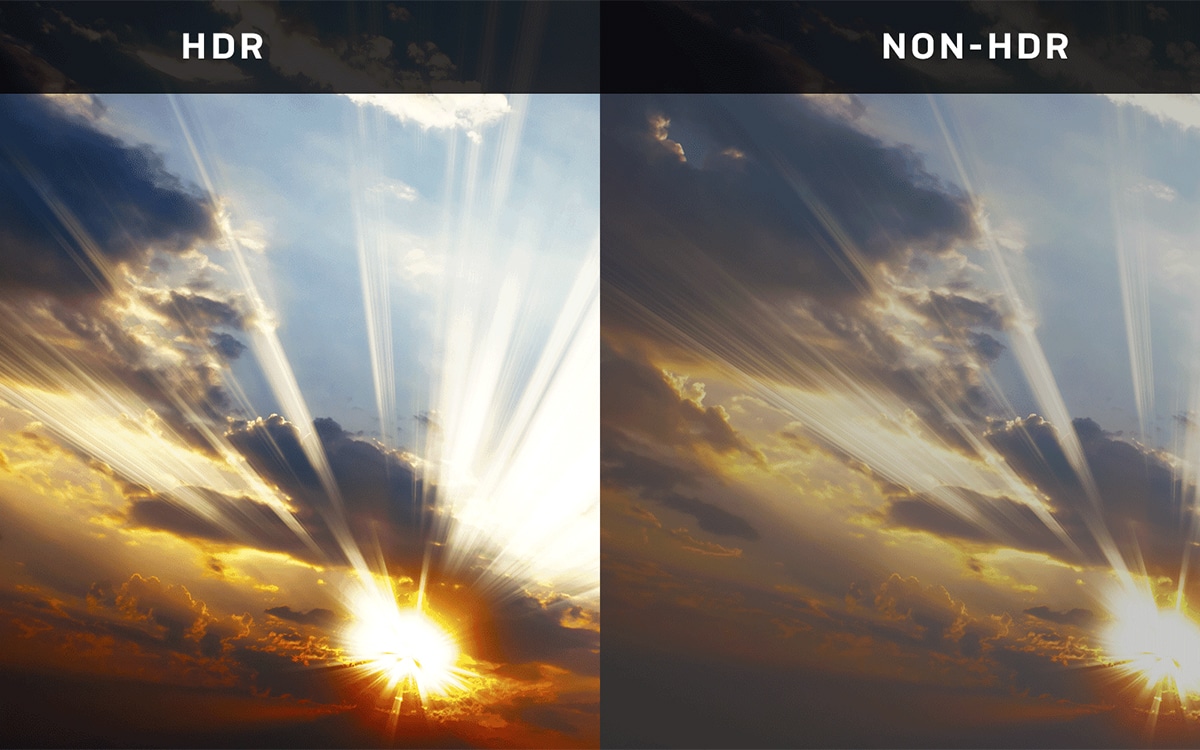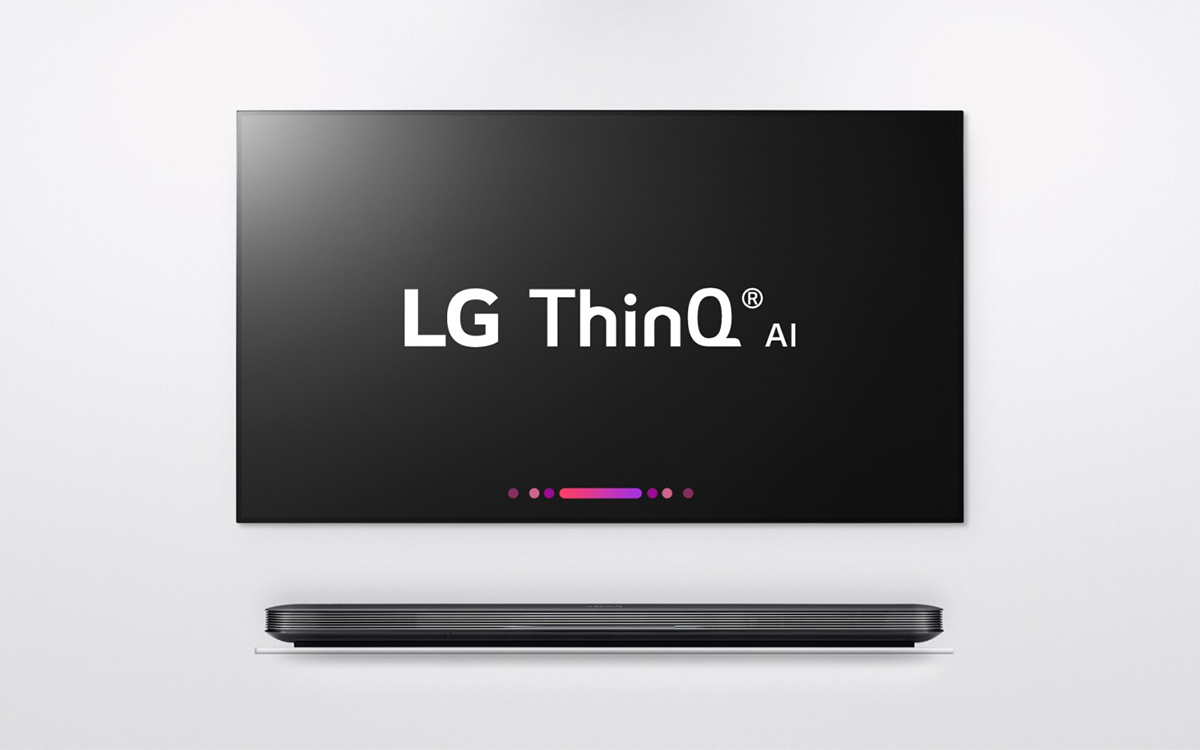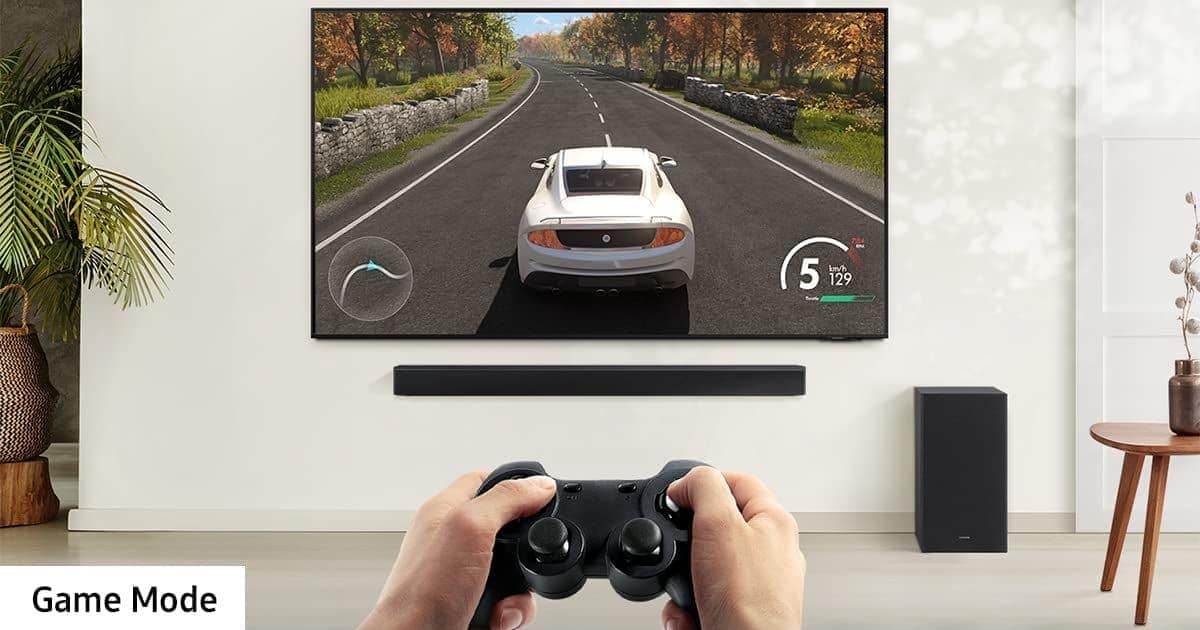Trying to navigate the modern television market can feel like deciphering an ancient text. There are so many technical terms and abbreviations, that it can leave you feeling a little dumbfounded! From OLED to QLED, to refresh rate and beyond, there are hundreds of different terms you’ll want to be familiar with to choose the right TV.
One term that’s often a source of confusion is “HDR”. So many TV models pride themselves on their HDR compatibility. But unless you know exactly what HDR is, it can be difficult to tell why it should matter!
Not sure what all of the HDR fuss is all about? You’re not alone! That’s why we’ve decided to put together this definitive guide to TV HDR. With the help of the team of tech experts here at Reliant, we’re going to find out once and for all what HDR is, and why you should care!
What Is HDR?
HDR is actually an abbreviation that stands for “High dynamic range”. But what exactly does that even mean?
To fully clarify what HDR refers to, it’s useful to find out what “Dynamic range” itself is. Dynamic range is actually used to refer to the difference between the brightest and darkest points of an image. Let’s say you were to display an image of the full moon on your TV. The darkest point of the image would of course be the night sky. The brightest point would be the moon, and perhaps the stars in the sky. If there is a greater difference in brightness between the darkest and brightest points of the image, then it results in greater contrast!
High dynamic range, thus is a technology that allows your TV to increase the ratio of light and darkness in any image! As well as this HDR also allows a TV to access a much wider spectrum of colours! With a greater number of colours and brightness levels, HDR images have much sharper contrast than non-HDR images!
HDR, otherwise known as “High dynamic range”, allows your TV screen to display images with greater contrast. It does this by increasing the range of brightness levels, and the number of available display colours!
HDR is specially designed to take advantage of modern display technologies. Older TVs were often limited in terms of the number of colours and brightness levels they could recreate. This means that slightly older video formats such as Blu-Rays, which were designed with these older TVs in mind, aren’t able to take full advantage of modern TVs! HDR formats such as UHD Blu-Rays are able to circumvent this problem!
How Does HDR Actually Work?
Now that we know what exactly HDR refers to, and what it does, you might wonder just how it works! Put simply, HDR is actually a special type of video signal! When compared to standard non-HDR video signals, HDR has much more data for a TV screen to make use of. This data includes information about brightness levels and colour. When an HDR-compatible TV receives this signal, it’s able to decode this information and display video with a wider gamut of colours and brightness levels.
This is why you need an HDR-compatible TV. If you were to send an HDR video signal to a non-HDR TV, it would simply be unable to display it. Older displays are incapable of decoding the signal, let alone providing the right brightness levels and vibrant arrays of colour.
HDR is actually a special video signal sent directly to an HDR-compatible TV. This signal contains much more information than a non-HDR video signal, to allow a display to access a wider selection of colours and brightness levels!
HDR video signals are specifically designed to allow modern displays to take full advantage of their visual capabilities. Playing a standard Blu-Ray disc on a modern 85-inch OLED, for instance, won’t look anywhere as good as playing a UHD Blu-Ray disc, specifically designed to offer HDR imagery!

What Are The Different Types Of HDR?
Unfortunately, as if HDR weren’t confusing enough to the average consumer, there are actually a number of distinct types of HDR video signals! But worry not, we’ve taken a look at some of the most important variations below!
HDR10
When you hear a TV being referred to as HDR-compatible, it’s most likely referring to compatibility with the HDR10 format. HDR10 is now the standard for HDR video signals and is an upgraded form of the standard HDR.
HDR10 differs slightly from standard HDR in terms of how it encodes data. All data found in an HDR10 video signal is considered to be “Fixed”. This means that no matter what display you use to show an HDR10 image, it will look consistent.
HDR10 is now considered to be the absolute standard for HDR images. It’s also free for any manufacturer to build compatibility into their TVs.
If you find content that’s listed as HDR10+, or perhaps under the name of Dolby Vision, then don’t panic. These video signals can still be displayed on HDR10 TVs, thanks to their fixed metadata. You just won’t get the added benefits that these formats offer!
HDR10+
HDR10+ is basically an upgraded version of the standard HDR10. HDR10+ was actually specially developed by Samsung and is available for licence by manufacturers. This means that despite being a Samsung technology, you can still find HDR10+ on displays from other manufacturers.
HDR10+ is specially designed to allow a TV to access higher brightness levels. These brightness levels are measured using “Nits”. The higher the nits, the greater the brightness of the screen. A standard HDR10 video signal will allow a TV to achieve a brightness level of up to 1,000 nits. HDR10+, on the other hand, allows a TV to access up to 4,000 nits of brightness!
HDR10+ is the upgraded form of HDR10. The key benefit of HDR10+ is its increased brightness. An HDR10+ video signal allows a TV to achieve a brightness of 4,000 nits, compared to HDR10’s 1,000 nits limit!
HDR10+ also contains dynamic metadata. This means that the metadata is not fixed like it is on a standard HDR10 video signal. In layman’s terms, “Dynamic” means that the data is able to move around slightly for a better experience on screen.
HDR10+ is offered by a massive number of streaming services, and can even be found on a number of UHD Blu-Ray discs.
Dolby Vision
Obviously, Dolby Vision is a special HDR video format created by the Dolby company. Dolby Vision is often used in tandem with Dolby Atmos, which is a premium audio format that allows for multi-channel room-filling surround sound!
Dolby Vision is often favoured by filmmakers and TV producers for its sense of control. This is because it allows them to set the perfect conditions for HDR playback, so when you watch a Dolby Vision film, you’re truly understanding the director or editor’s original vision!
Dolby Vision is also able to offer greater brightness levels and colour selections than even HDR10+. It’s truly one of the most premium video formats on the market and is often sought after by lovers of film and TV.
Dolby Vision is perhaps one of the best premium video formats. It’s able to cleverly use dynamic metadata to create images with boosted brightness levels, and even more available colours.
There is also a slightly upgraded form of Dolby Vision known as Dolby Vision IQ. This special version is able to use dynamic metadata to change the brightness and colour contrast of any image depending on the brightness of the room itself. If the room is too bright, then the built-in light sensor of the TV will identify this, and adjust the image brightness accordingly!
Should HDR Format Match A TV’s HDR Compatibility?
You don’t necessarily need a Dolby Vision-compatible display just to enjoy Dolby Vision content. As we mentioned above, an HDR10 display can still show HDR10+ and Dolby Vision images, thanks to their included fixed metadata. However, in order to take advantage of the benefits offered by HDR10+ and Dolby Vision, such as their dynamic metadata, and increased brightness levels, you’ll need a TV compatible with either of the two.

Do You Need A Specific HDMI Cable For HDR?
You don’t need a special type of HDMI cable that’s specifically designed for HDR. However, you will need to ensure you have a HDMI 2.0 cable at least. HDMI 2.0 cables can carry premium video signals and are needed for 4K imagery. HDMI 2.0 is also needed for 10-bit colour signals. 10-bit colour is specifically used by HDR, so you’ll want to make sure you have this cable!
Is HDR Worth Using?
We don’t know if it would be possible to sing the praises of HDR quite enough! HDR is totally worth using, whenever you get the opportunity. If you have an HDR-compatible TV, we totally recommend taking full advantage of it. We also recommend making use of upgraded HDR formats like HDR10+ and Dolby Vision if you can.
HDR is specifically designed to take full advantage of your TV’s display capabilities. Older TVs were slightly limited in terms of the range of colours and brightnesses they could recreate. This means that video signals from sources like Blu-Rays, and even streaming content, were produced in such a way that acknowledges those limitations. Now that those limitations are no longer present in most modern TVs, HDR video formats allow them to look much better.
HDR is totally worth taking advantage of. In fact, we’d go so far as to say that HDR is totally essential for modern TVs. It allows your modern TV to take advantage of all of its many visual benefits!
If you had the chance to opt for a UHD Blu-Ray copy of a film, over a standard Blu-Ray, we’d totally recommend upgrading. The film will look so much better thanks to the enhanced contrast and colour variety!
How Do You Access HDR?
Obviously, HDR refers to a video format that certain TVs are capable of displaying. So, the first step toward accessing HDR is finding an appropriate piece of HDR content. Second, you’ll need to make sure you have an HDMI 2.0 cable, to allow for high-speed video signal transmission!
An HDR-compatible TV should actually display content in HDR automatically, provided it receives an HDR signal. There’s no need to head through any complex settings menus just to activate HDR.
All you need is an HDR-compatible TV and an HDR video signal. Once the two meet, you’ll be in HDR heaven!
What Type Of TV Is Best For HDR?
Just about any modern TV type is perfect for displaying HDR images. Provided the TV is HDR compatible. However, of all of the different display types, we do have to concede that QLED TVs have a slight advantage.
QLED TVs are specifically designed to be much more colourful than any other display type. This is because they use special quantum dots. Without getting too technical, these dots work differently from standard pixels. They can produce light of highly specific wavelengths, which in turn results in a much greater array of colours.
HDR images look great on QLED TVs. QLED TVs are specially designed to produce more realistic and lifelike colours than any other display type. This makes them perfect for HDR video signals.
As such, QLED TVs seem almost like they’re specially made for HDR imagery. The greater depth of colour offered by an HDR video signal is perfectly displayed by a QLED TV. So you can truly enjoy immersive and detailed images!
What Screen Size Is Best For HDR?
HDR vastly improves the visual clarity of any on-screen image. This is thanks to the improved contrast and the greater sense of detail on every inch of the screen. As such, a great way to take advantage of these crisp and clear images is to display them on the largest screens around.
HDR looks great on some of the largest TVs available. Especially on a 98-inch TV or an 85-inch TV. With a greater screen size, it’s much easier to spot every individual object in any given scene. For total immersion in your favourite films, HDR on a large screen is a totally perfect option!
However, this isn’t to suggest that HDR images look unsatisfying on much smaller screens. Far from it! Even on the smallest of screens, HDR looks great. HDR can enhance a TV’s colour range, so even on the smallest TV, you’ll be able to delight in a rich and vibrant image that will blow you away!
What Resolution Is Best For HDR?
If you want to enjoy HDR at its best, you’ll want a TV with a higher resolution. Preferably, a 4K resolution. A TV with a 4K resolution offers a greater pixel count. This means that there are simply more pixels available to show off the higher detail offered by HDR!
Most pieces of HDR content are also 4K anyway. So having a 4K TV will mean that the best of the best can be shown off.
8K is perhaps less essential for HDR. HDR images of course look even sharper at 8K, as the resolution of an 8K TV is 4 times that of a 4K TV. However, there isn’t currently much content available in 8K.
What Content Uses HDR?
Film
Many films are actually produced with HDR in mind. In fact, most of the time, when watching new films in the cinema, you’ll be watching them in true HDR. As such, there’s nothing better to make use of HDR than a good film!
HDR is perfect for film. HDR-compatible TVs are able to more accurately display films exactly how the original creators intended! We’d go so far as to say that HDR is totally essential for dedicated cinephiles!
As we mentioned above, certain HDR formats, such as Dolby Vision, allow directors and editors to closely control exactly how their films appear in cinemas, and at home. As such, watching a film using HDR allows you to get much closer to the director’s original vision for the film!
TV
Similar to films, many TV shows are also produced with HDR in mind. However, not all channels are able to offer HDR broadcasting. It’s worth checking with each channel to see if it offers HDR imagery. Certain shows on Sky channels are broadcast in 4K and HDR.
Sport
Certain channels such as Sky Sports actually broadcast their sports content in HDR. With HDR, live sports feel all the more exciting. Enhancements in visual detail let you feel as though you’re right there in the stadium at some of the year’s biggest events.
The enhanced colour of HDR also makes it easier to track individual players on the field. You’ll be able to easily identify every player and their team at a quick glance.
Streaming
Some of the world’s leading streaming services also offer HDR support. Platforms like Netflix and Disney+ offer users the chance to stream content in HDR on a compatible display.
However, in order to access HDR, certain streaming services may require that you subscribe to specific subscription tiers. For instance, Netflix requires that you subscribe to the highest subscription tier, known as “Premium”. This subscription tier also entitles users to 4K streaming and the ability to access Netflix on a massive number of devices simultaneously.
Other platforms like Disney+ actually offer HDR streaming at no extra charge. All you need is a basic subscription and a compatible TV! Disney+ offers support for HDR10+ and Dolby Vision. If your TV is compatible with Dolby Vision, for instance, then supported titles will automatically display using the format!
Gaming
Consoles like the PlayStation 5 and Xbox Series X not only can render graphics in crystal-clear 4K, but also in HDR! This not only helps to make digital worlds appear all the more real. It also results in much better performance for gamers.
HDR is great for all kinds of gamers. Pro gamers will benefit from the increase in detail, for better performance. Story-focused gamers will benefit from the greater immersion in digital environments.
HDR improves the contrast in any on-screen image. As we’ve mentioned, this leads to an increase in detail. For gamers, this increase in detail can make it much easier to stay on top of the action. In the heat of the moment, gamers will be able to make more intelligent and informed decisions.
Does HDR Consume More Electricity?
Unfortunately, using HDR does result in slightly higher energy consumption. An HDR video signal gets a TV to work a little bit harder than normal. The display has to work a little harder to produce such specific colours and specific amounts of light
But don’t panic. HDR doesn’t result in a massive amount of extra energy being used. You won’t find your monthly energy bills climbing massively. But if you want a slightly more eco-friendly display, then a non-HDR option may be best.

Frequently Asked Questions
What Is HDR?
HDR is actually a highly specialised premium video format that packs more detailed information into its signal than a standard video signal. By decoding this information, a TV is able to access a larger number of brightness levels and distinct colours. With more brightness levels and colours to display, HDR images have much greater contrast and detail.
Is HDR Better Than 4K?
No. HDR and 4K are two very different things. HDR is a special video format for improved contrast. 4K, on the other hand, is a distinct TV resolution. Neither one is better than the other. In fact, the two work perfectly together. The greater contrast of HDR allows for 4K images to look amazing.





